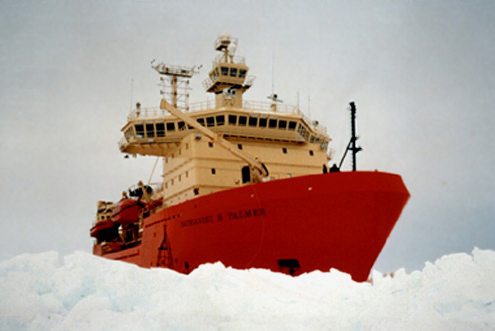 In the first winter research voyage into the Ross Sea in nearly 20 years a 2-month expedition left Lyttelton, New Zealand on April 10th. The Polynyas, ice production, and seasonal evolution in the Ross Sea (PIPERS) cruise will investigate why sea ice in the Ross Sea polynya and environs have expanded even as ice packs in the Arctic and some other parts of Antarctica have shrunk.
In the first winter research voyage into the Ross Sea in nearly 20 years a 2-month expedition left Lyttelton, New Zealand on April 10th. The Polynyas, ice production, and seasonal evolution in the Ross Sea (PIPERS) cruise will investigate why sea ice in the Ross Sea polynya and environs have expanded even as ice packs in the Arctic and some other parts of Antarctica have shrunk.
The two dozen scientists, aboard the Nathaniel B. Palmer, a 94-meter-long U.S. icebreaker, are led by Antarctic Sea-Ice Process and Climate (ASPeCT) co-Chair Steve Ackley as Chief Scientist. In the course of the expedition they will be chasing 60 mph winds, blowing ice, snow and sea spray in 24 hour darkness to better understand the role of polynyas in the dead of winter.
The cruise was recently highlighted in Science, including commentary from the other ASPeCt co-Chair, Marilyn Raphael.
ASPeCt is an Expert Group on multi-disciplinary Antarctic sea ice zone research within the SCAR Physical Sciences Group and is co-sponsored by the Climate and Cryosphere project (CliC). Established in 1996, ASPeCt has the key objective of improving our understanding of the Antarctic sea ice zone through focussed and ongoing field programs, remote sensing and numerical modelling.
Science 21 Apr 2017: “Polar Research: Scientists hope risky winter voyage yields icy rewards” Vol. 356, Issue 6335, pp. 234-235.
DOI: 10.1126/science.356.6335.234
